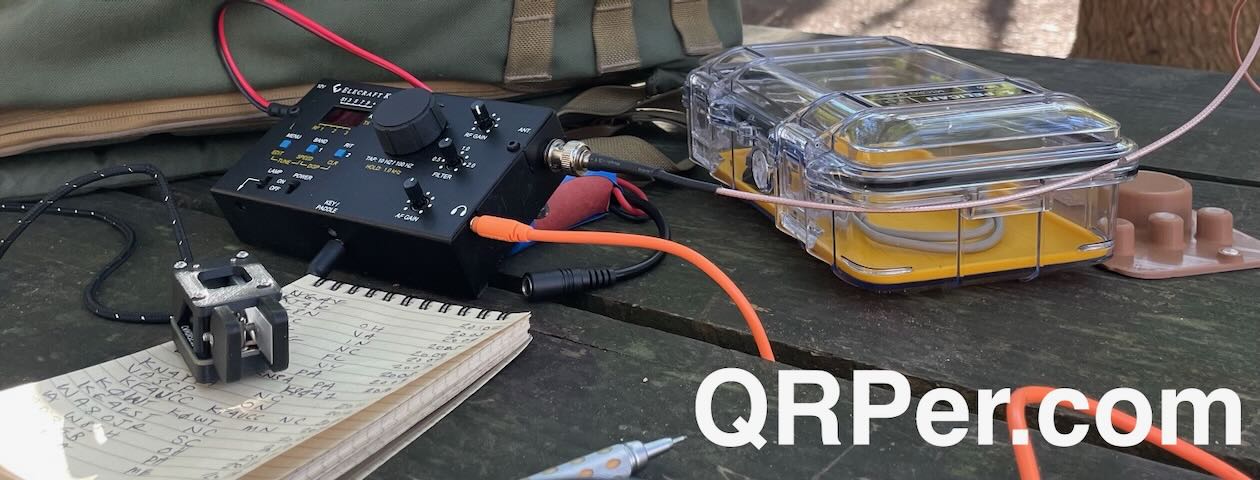I’d like to start this field report with a side story. I’ll keep this reader anonymous since I haven’t asked for permission to post his story (although I’m certain he wouldn’t mind!):
A QRP Christmas Gift
 Yesterday, I was contacted by a reader who had just received an amazing gift.
Yesterday, I was contacted by a reader who had just received an amazing gift.
On Christmas morning, his wife presented him with a tiny wrapped box and inside there was a small note:
“Get yourself a great field radio. You have Carte Blanche!”
What an amazing gift…right–?! She literally said Carte Blanche!
Evidently, she is familiar with my YouTube channel (poor thing) because he often watches my activation videos on their living room TV. [Between us, I’m a bit surprised she still loves him after subjecting her to my videos.]
She told him, “Run your choice by Thomas before ordering.”
The funny bit? He approached me with this very question in November as he plotted a 2023 radio purchase. He couldn’t decide between the Icom IC-705 and the Elecraft KX2.
He wrote yesterday to tell me that he placed an order for a new Elecraft KX2 with all the trimmings; Elecraft’s KX2 “Shack-In-A-Box” package plus a set of KXPD2 paddles.
The KX2 is back-ordered due to parts availability, so he won’t receive his unit for several months, most likely.
Based on his operating style, I think he chose wisely. The IC-705 is a benchmark field radio, but he was looking for something that he could pair with a random wire antenna (the ‘705 lacks an internal ATU) and that would be easy to use on SOTA activations. He’s new to CW as well and loved the fact that the KXPD2 paddles attach to the front of the KX2.
Why do I mention this story? Because it’s not only fresh on my mind, but it’s the same radio and antenna I used during an activation on Thursday, December 1, 2022.
Tuttle Educational State Forest (K-4861)
 As I pulled into Tuttle’s parking area that day I had a tried-and-true field radio kit pairing in my pack: my Elecraft KX2 and PackTenna 9:1 Random Wire antenna.
As I pulled into Tuttle’s parking area that day I had a tried-and-true field radio kit pairing in my pack: my Elecraft KX2 and PackTenna 9:1 Random Wire antenna.
As I mention at the start of my activation video (see below), with the Elecraft KX2 and a random wire, I could easily activate all of the summits, parks, and islands I desire. It’s such an effective, flexible, and portable combo.
QRPp
 To shake things up, I decided to knock the output power of the KX2 down to one half of one watt–500 milliwatts–at least for the CW portion of my activation.
To shake things up, I decided to knock the output power of the KX2 down to one half of one watt–500 milliwatts–at least for the CW portion of my activation.
Why not?
Plus, I don’t think I’ve ever validated a POTA activation with 1/2 of a watt, so it might make for a fun challenge! Continue reading POTA with 500 milliwatts CW and 10 watts SSB using the Elecraft KX2 and PackTenna Random Wire combo









































